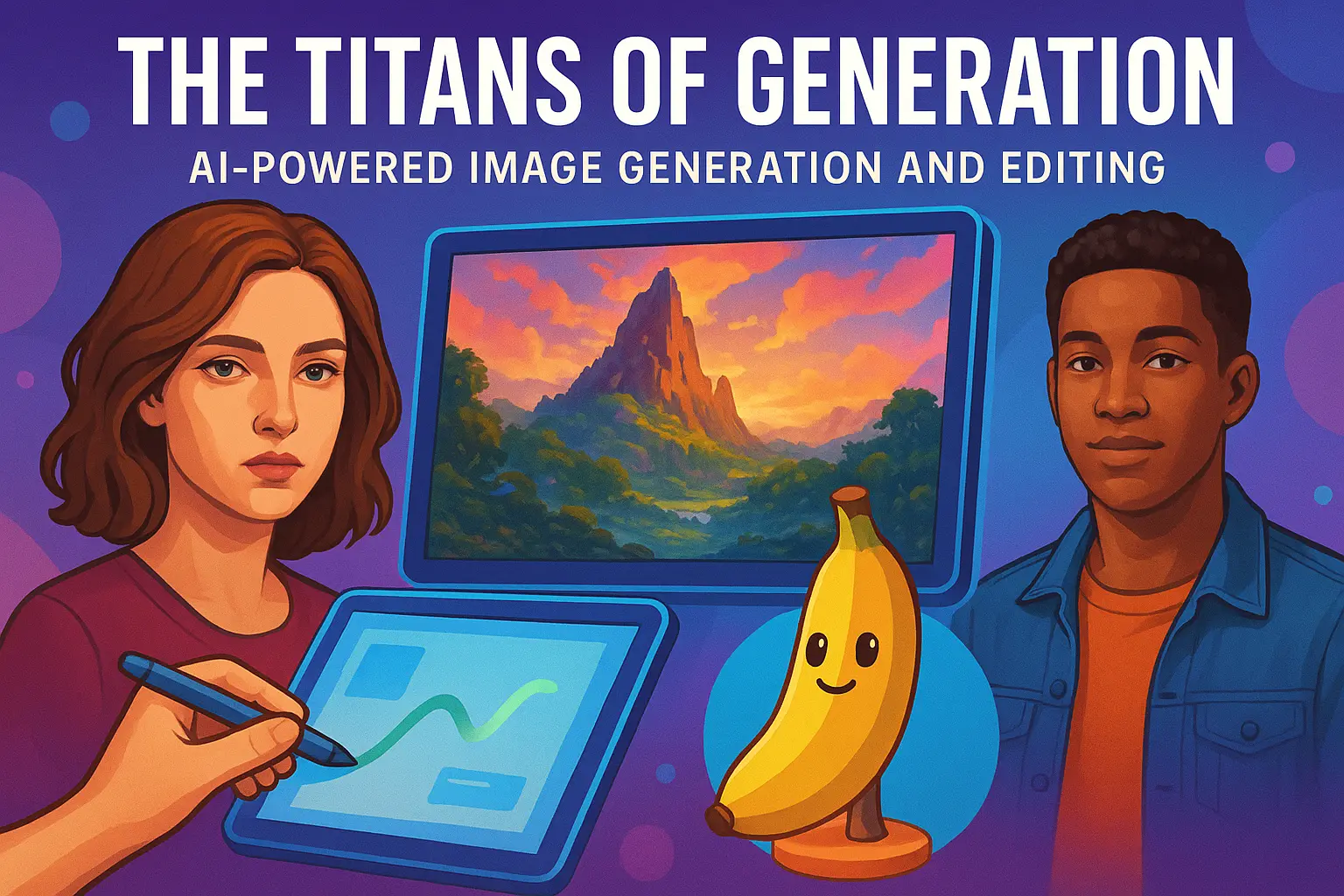- Blog
- The Cutting Edge of Creativity: A Look at the Leading Image Generation and Editing Models of 2025
The Cutting Edge of Creativity: A Look at the Leading Image Generation and Editing Models of 2025

The world of digital artistry and content creation is in the midst of a profound transformation, thanks to the rapid advancements in artificial intelligence. In 2025, the landscape of image generation and editing is more vibrant and competitive than ever, with a host of powerful models that can turn simple text prompts into breathtaking visuals and offer editing capabilities that were once the exclusive domain of seasoned professionals. From hyperrealistic portraits to fantastical scenes, these AI models are not just tools but creative partners. Let's explore the mainstream models that are defining the visual language of tomorrow.
The Titans of Generation: Creating Worlds from Words
At the forefront of image generation are several key players that have captured the imagination of artists, designers, and hobbyists alike. These models are distinguished by their unique strengths, from photorealism to artistic flair.
OpenAI's Evolving Vision: From DALL-E 3 to GPT-Image
OpenAI, a pioneer in the generative AI space, continues to be a dominant force. Building on the success of DALL-E 3, which is known for its strong prompt adherence and integration within ChatGPT, OpenAI has pushed the boundaries further with its more advanced models. These newer iterations demonstrate an even more nuanced understanding of complex prompts, resulting in images that are not only visually stunning but also contextually rich. The ability to generate coherent text within images and produce a wide array of artistic styles keeps OpenAI's offerings at the top of the list for many creators.
Midjourney V7: The Reigning King of Aesthetics
For those who prioritize artistic quality and a cinematic feel, Midjourney remains a top contender. With its latest version, Midjourney V7, the platform has further refined its signature aesthetic. It excels at producing images with a distinct, often dramatic, and beautifully rendered style. The Midjourney community, centered around Discord, is a testament to the model's appeal among digital artists who value its ability to create evocative and visually impactful compositions. While it may sometimes take more creative prompting to achieve a specific result, the artistic payoff is often well worth the effort.
Stability AI's Stable Diffusion 3.5: The Open-Source Powerhouse
Stability AI continues to champion the open-source movement with Stable Diffusion 3.5. This model is highly regarded for its flexibility and the high degree of control it offers to users. Because it is open-source, a vibrant community of developers and artists constantly builds upon its foundation, creating a rich ecosystem of custom models and tools. Stable Diffusion 3.5 is a versatile workhorse, capable of producing a wide range of styles, from photorealistic to abstract. Its availability for local installation also appeals to users who prioritize privacy and want to experiment without the constraints of a web-based service.
Google's Gemini 2.5 Flash Image: The Rise of Multimodality
Google has made significant strides in the image generation space with its Gemini family of models. Gemini 2.5 Flash Image stands out for its deep integration with Google's broader AI ecosystem. This model leverages Google's vast knowledge base to generate images that are not only visually impressive but also grounded in real-world understanding. Its ability to handle nuanced and conversational prompts makes it an intuitive tool for a wide range of users.
The New Frontier: AI-Powered Image Editing
Beyond simple generation, the ability to intuitively edit and manipulate images with AI is becoming increasingly important. The models of 2025 offer a glimpse into a future where complex edits can be performed with simple natural language commands.
Flux: The Context-Aware Editor
A notable emerging player in the image editing arena is Flux. This model is designed with a deep understanding of image context, allowing for remarkably precise and intuitive edits. Instead of painstakingly using traditional tools, users can simply describe the changes they want to see. For example, a user could ask to "make the sky more dramatic" or "change the color of the car to a cherry red," and Flux will execute these commands with a high degree of accuracy. This contextual awareness makes it a powerful tool for both professional photo editors and casual users looking to enhance their images.
The Viral Sensation: Google's "Nano Banana"
One of the most talked-about developments in AI image editing has been the viral trend surrounding a feature within Google's Gemini 2.5 Flash Image, affectionately nicknamed "Nano Banana" by the online community. This powerful tool allows users to transform their photos into stunningly realistic 3D figurines and perform a wide array of creative edits with simple text prompts. The accessibility and impressive results of this feature have led to a surge in its popularity, with social media feeds filled with imaginative creations. The ability to seamlessly blend subjects into new environments, alter clothing and styles, and even insert people into famous paintings has captured the public's imagination. For those looking to dive into this creative phenomenon, exploring a dedicated resource can provide a wealth of inspiration and guidance on how to make the most of this exciting technology. To see what all the buzz is about, you can explore more about this trend and its capabilities with the nano banana.
The Road Ahead
The world of AI image generation and editing is moving at a breakneck pace. The models that are mainstream in 2025 are a testament to the incredible progress that has been made in a relatively short amount of time. As these technologies continue to evolve, we can expect to see even more powerful and intuitive tools that will further democratize creativity and empower individuals to bring their visions to life in ways we are only just beginning to imagine. The future of visual creation is here, and it is powered by artificial intelligence.
